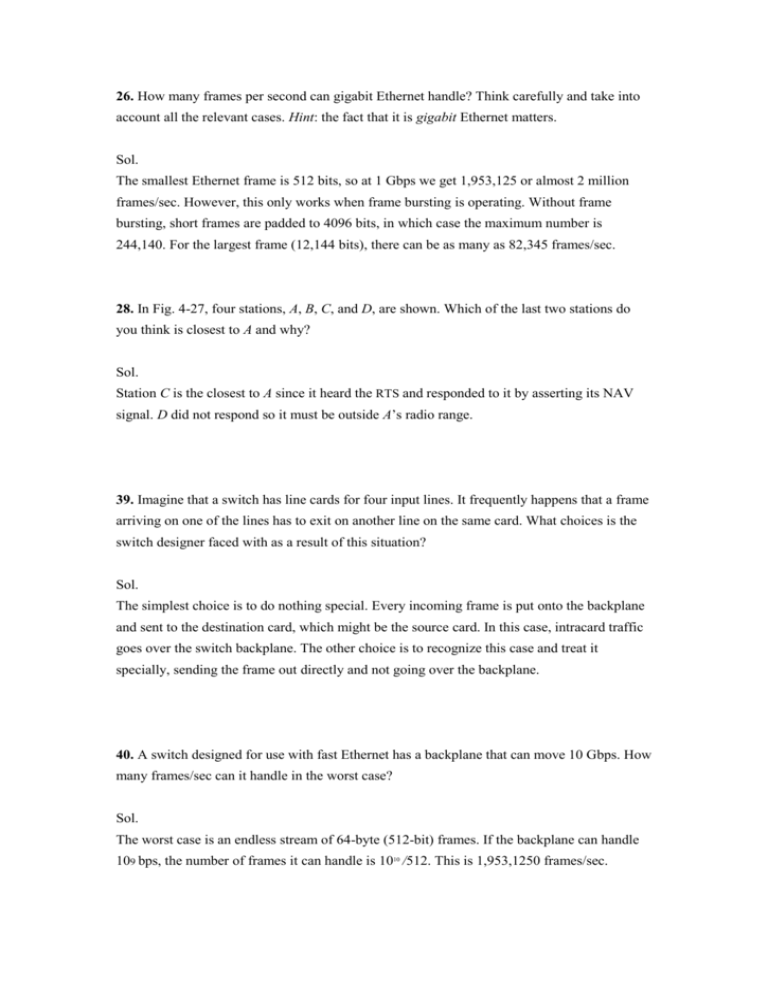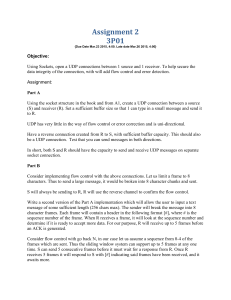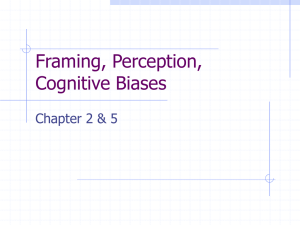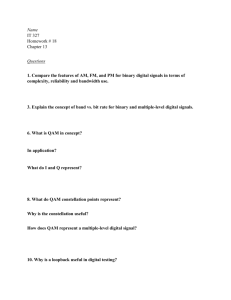26. How many frames per second can gigabit Ethernet handle
advertisement

26. How many frames per second can gigabit Ethernet handle? Think carefully and take into account all the relevant cases. Hint: the fact that it is gigabit Ethernet matters. Sol. The smallest Ethernet frame is 512 bits, so at 1 Gbps we get 1,953,125 or almost 2 million frames/sec. However, this only works when frame bursting is operating. Without frame bursting, short frames are padded to 4096 bits, in which case the maximum number is 244,140. For the largest frame (12,144 bits), there can be as many as 82,345 frames/sec. 28. In Fig. 4-27, four stations, A, B, C, and D, are shown. Which of the last two stations do you think is closest to A and why? Sol. Station C is the closest to A since it heard the RTS and responded to it by asserting its NAV signal. D did not respond so it must be outside A’s radio range. 39. Imagine that a switch has line cards for four input lines. It frequently happens that a frame arriving on one of the lines has to exit on another line on the same card. What choices is the switch designer faced with as a result of this situation? Sol. The simplest choice is to do nothing special. Every incoming frame is put onto the backplane and sent to the destination card, which might be the source card. In this case, intracard traffic goes over the switch backplane. The other choice is to recognize this case and treat it specially, sending the frame out directly and not going over the backplane. 40. A switch designed for use with fast Ethernet has a backplane that can move 10 Gbps. How many frames/sec can it handle in the worst case? Sol. The worst case is an endless stream of 64-byte (512-bit) frames. If the backplane can handle 109 bps, the number of frames it can handle is 1010 /512. This is 1,953,1250 frames/sec. Q1. Suppose that an 11-Mbps 802.11b LAN is transmitting 64-byte frames back-to-back over a radio channel with a bit error rate of 10-6. How many frames per second will be damaged on average? Sol. A frame contains 512 bits. The bit error rate is p 10-6. The probability of all 512 of them surviving correctly is (1 p)512, which is about 0.999488. The fraction damaged is thus about 5.12 10-4. The number of frames/sec is 11 106 /512 or about 21,484. Multiplying these two numbers together, we get about 11 damaged frame per second. Q2. Draw a spanning tree covering the LANs in Fig 4-44?











